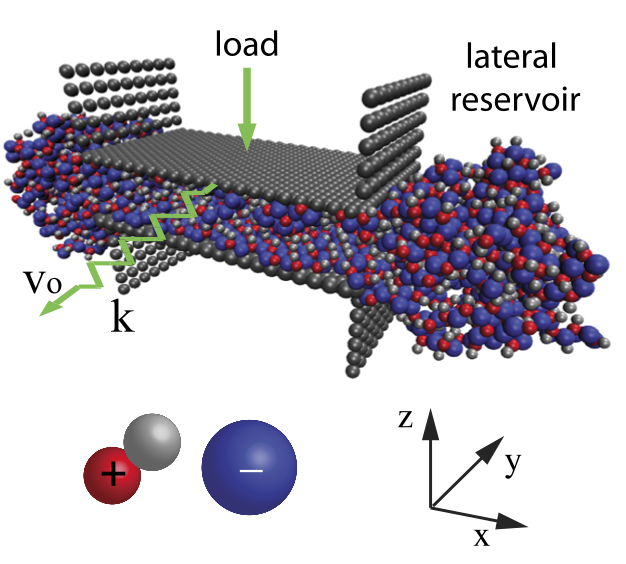Recent measurements suggest the possibility to exploit ionic liquids (ILs) as smart lubricants for nano-contacts, tuning their tribological and rheological properties by charging the sliding interfaces. Following our earlier theoretical study of charging effects on nanoscale confinement and squeezout of a model IL, we present here molecular dynamics simulations of the frictional and lubrication properties of that model under charging conditions. First, we describe the case when two equally charged plates slide while being held together to a confinement distance of a few molecular layers. The shear sliding stress is found to rise strongly and discontinuously as the number of IL layers decreases stepwise. However, the shear stress shows, within each given number of layers, only a weak dependence upon the precise value of the normal load, a result in agreement with data extracted from recent experiments. We subsequently describe the case of opposite charging of the sliding plates and follow the shear stress when the charging is slowly and adiabatically reversed in the course of time, under fixed load. Despite the fixed load, the number and structure of the confined IL layers change with changing charge, and that in turn drives strong friction variations. The latter involves first of all charging-induced freezing of the IL film, followed by a discharging-induced melting, both made possible by the nanoscale confinement. Another mechanism for charging-induced frictional changes is a shift of the plane of maximum shear from mid-film to the plate-film interface, and vice versa. While these occurrences and results invariably depend upon the parameters of the model IL and upon its specific interaction with the plates, the present study helps identifying a variety of possible behavior, obtained under very simple assumptions, while connecting it to an underlying equilibrium thermodynamicspicture.

Recent measurements suggest the possibility to exploit ionic liquids (ILs) as smart lubricants for nano-contacts, tuning their tribological and rheological properties by charging the sliding interfaces. Following our earlier theoretical study of charging effects on nanoscale confinement and squeezout of a model IL, we present here molecular dynamics simulations of the frictional and lubrication properties of that model under charging conditions. First, we describe the case when two equally charged plates slide while being held together to a confinement distance of a few molecular layers. The shear sliding stress is found to rise strongly and discontinuously as the number of IL layers decreases stepwise. However, the shear stress shows, within each given number of layers, only a weak dependence upon the precise value of the normal load, a result in agreement with data extracted from recent experiments. We subsequently describe the case of opposite charging of the sliding plates and follow the shear stress when the charging is slowly and adiabatically reversed in the course of time, under fixed load. Despite the fixed load, the number and structure of the confined IL layers change with changing charge, and that in turn drives strong friction variations. The latter involves first of all charging-induced freezing of the IL film, followed by a discharging-induced melting, both made possible by the nanoscale confinement. Another mechanism for charging-induced frictional changes is a shift of the plane of maximum shear from mid-film to the plate-film interface, and vice versa. While these occurrences and results invariably depend upon the parameters of the model IL and upon its specific interaction with the plates, the present study helps identifying a variety of possible behavior, obtained under very simple assumptions, while connecting it to an underlying equilibrium thermodynamicspicture.
